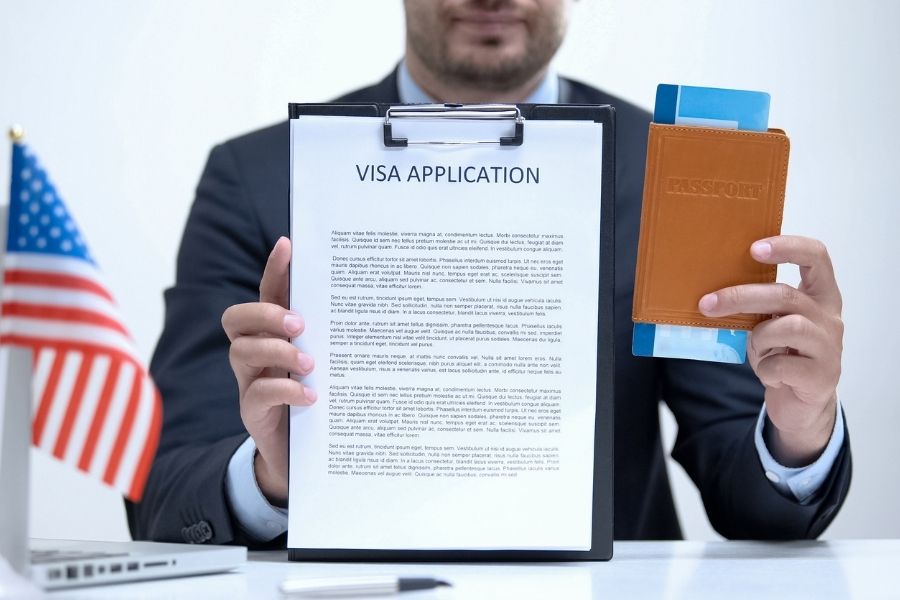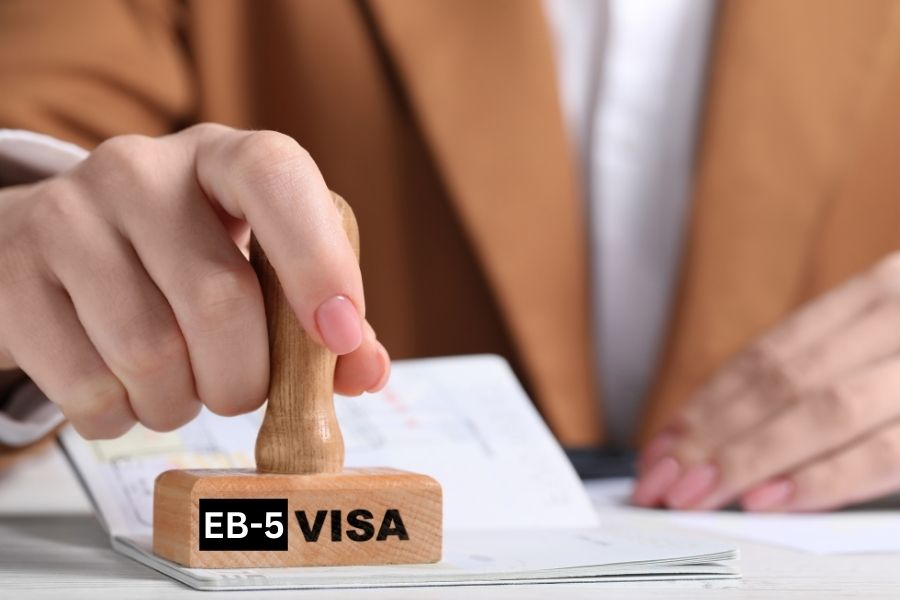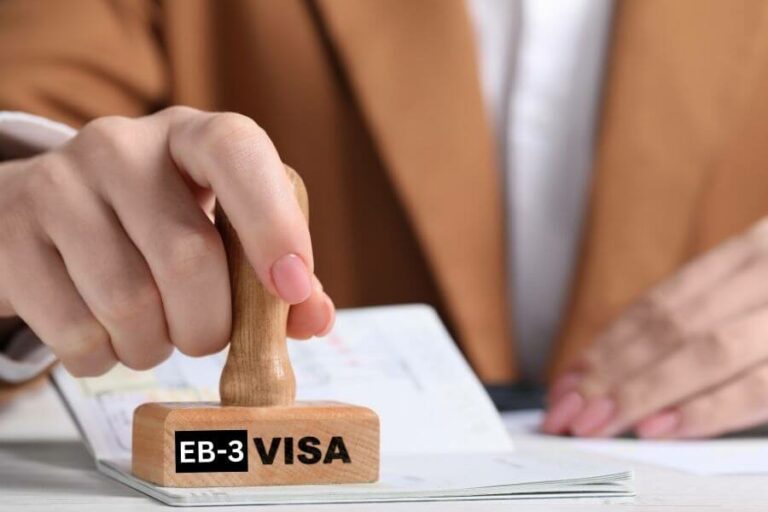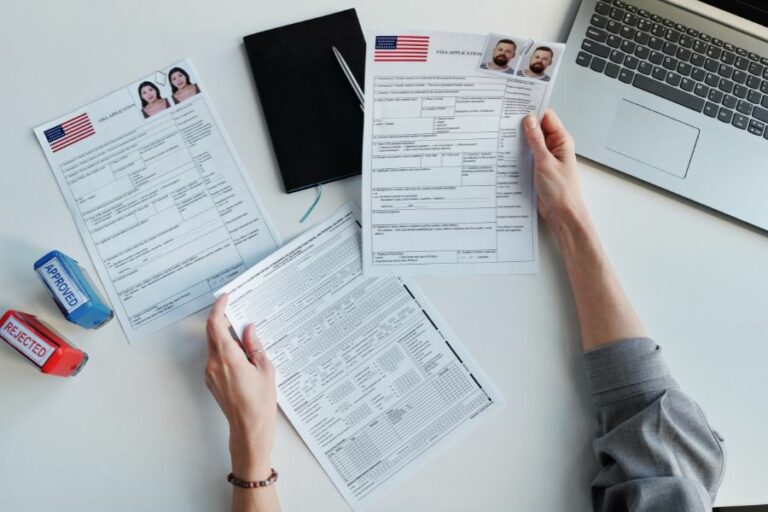EB-5 Visa for Investors: What You Need To Know
In the diverse landscape of U.S. immigration, the EB-5 visa stands out as a unique intersection of foreign investment and pathways to permanent residency.
Designed with the dual purpose of stimulating the American economy while offering foreign nationals a shot at the coveted green card, the EB-5 is an opportunity for American residency and to become an integral contributor to the nation’s economy.
What is the EB-5 visa?
The EB-5 visa is a United States immigrant visa program designed to allow foreign investors the opportunity to obtain U.S. permanent residency, commonly referred to as a “green card”, in exchange for making a significant financial investment in a U.S. business venture that results in job creation or preservation for American workers.
EB-5 Visa Requirements
Eligibility for the EB-5 Immigrant Investor Program is primarily based on the investment amount and the potential for job creation. However, there are several detailed criteria that an investor must meet:
CAPITAL INVESTMENT AMOUNT
A foreign investor must invest $1.8 million in a new commercial enterprise. However, if the enterprise is in a Targeted Employment Area (TEA), which is either a rural location or an area with a high unemployment rate, the minimum investment requirement is reduced to $900,000.
NEW COMMERCIAL ENTERPRISE
The investment must be in a “new commercial enterprise,” which is a commercial enterprise that is either newly established or, in some cases, a troubled business that will be restructured or expanded using the EB-5 investment.
JOB CREATION
The investment must create or preserve at least 10 full-time jobs for qualifying U.S. workers within two years of the investor’s admission to the U.S. as a Conditional Permanent Resident.
AT RISK INVESTMENT
The capital must be put “at risk” for the purpose of generating a return on the capital. The goal is to ensure that the money is genuinely invested and subject to the possibility of profit or loss.
INVOLVEMENT IN BUSINESS
While the investor doesn’t necessarily need to manage the daily operations of the business, they must be involved in some fashion, either through day-to-day management or policy formation (e.g., as a corporate officer or board member).
LAWFUL SOURCE OF FUNDS
Investors must demonstrate that the capital they are investing comes from a lawful source. This could be from earnings, savings, gifts, inheritances, or sales of property, among other lawful means. The USCIS will thoroughly scrutinize the origin of the funds to ensure they are not connected to any criminal activities.
NO CRIMINAL RECORD
Applicants must not have a record of involvement in financial fraud, money laundering, or other financial criminal activities. They should also not pose a threat to U.S. national security or public safety.
ADMISSIBILITY TO THE U.S.
Just like other immigration programs, EB-5 applicants must be admissible to the U.S. This means they should not have any health-related or security reasons that make them ineligible.
INTENT TO IMMIGRATE
The investor and their immediate family (spouse and children under 21) must genuinely intend to immigrate to the U.S. This isn’t merely an investment scheme; it’s an immigration pathway.
How to apply for an EB-5 visa?

1. Select a suitable EB-5 project:
Before starting the application process, the investor should identify and select a suitable EB-5 project. This can be either a direct investment or through a USCIS-approved Regional Center.
2. Invest the capital:
Once a project is selected, the foreign investor should invest the required capital amount, either $900,000 if the project is located in a Targeted Employment Area (TEA), or $1.8 million for non-TEA areas1.
Note: The amount needed for investment capital is adjusted about every 5 years due to inflation. The last increase to the above amounts occurred in 2019.
3. File Form I-526, Immigrant Petition by Alien Investor:
After making the investment, the investor should file the I-526 petition with USCIS. This form demonstrates the investor’s eligibility for the EB-5 program.
It requires documentation proving the source of funds is lawful, the investment meets job creation requirements, and the invested capital is at risk for the purpose of generating a return.
4. Wait for I-526 petition approval:
Once USCIS receives the I-526 petition, it will be reviewed. This can take several months to more than a year, depending on various factors, including the current backlog of applications.
5. Apply for a conditional green card:
If outside the U.S.: Upon approval of the I-526 petition, the investor can apply for a visa at a U.S. consulate in their home country. This process is known as Consular Processing.
If inside the U.S.: The investor can apply to adjust their status to a conditional permanent resident using Form I-485, Application to Register Permanent Residence or Adjust Status.
6. Enter the U.S. (If abroad):
After obtaining the visa from the U.S. consulate, the investor and their eligible family members can enter the U.S. They will then receive their conditional green cards.
7. File Form I-829, Petition By Investor to Remove Conditions on Permanent Resident Status:
Approximately 90 days before the second anniversary of obtaining the conditional green card, the investor must file Form I-829 to remove the conditions on their permanent residency.
This step requires proving that the full investment amount was made, the funds remained at risk, and the investment led to the creation or preservation of at least 10 full-time jobs for qualifying U.S. workers.
8. Receive Permanent Green Card:
After USCIS approves the I-829 petition, the conditions on the investor’s residency will be removed, granting them and their immediate family members a permanent green card2.
9. Eligibility for U.S. Citizenship:
After five years of permanent residency (including the two years with a conditional green card), the investor can apply for U.S. citizenship through naturalization.

EB-5 Visa Processing Time
The EB-5 process, which includes the processing of Forms I-526, I-485 and I-829, varies based on the workload of different USCIS service centers across the U.S. and other case-specific factors.
Check below the estimated case processing times for each form3, which can be used by investors as a general guideline.
Investors coming from backlogged countries may experience longer waits.
| FORM | PROCESSING TIME |
| I-526 | 55 months |
| I-485 | ~30 months |
| I-829 | ~66 months |
Costs for EB-5 Visa
The costs associated with the EB-5 visa program are more than just the investment amount. There are several fees, both government-imposed and otherwise, as well as potential additional costs that vary based on the specifics of each investor’s situation.
Here’s a breakdown of some of the primary costs:
| Category | Detail | Cost |
| Investment Capital | Standard | $1.8 million |
| Investment in a TEA | $900,000 | |
| USCIS Filing Fees | I-526 | $3,675 |
| I-485 or DS260 | $1,000 per person | |
| I-829 | $3,750 + $85 biometric | |
| Legal and Professional Fees | I-526 preparation and filing | ~$15,000 – $25,000 |
| I-829 preparation and filing | ~$7,000 – $10,000 | |
| Administrative/Subscription Fees | Investing through a Regional Center | ~$30,000 -$60,000 |
| Due Diligence Fees | Review of the project | Around $10,000 |
Targeted Employment Area Explained
A targeted employment area (TEA) is a rural area or a location with a high rate of unemployment. EB-5 investors who make their investment in a TEA can enjoy the reduced investment threshold.
However, not all rural areas or regions of high unemployment qualify as a targeted employment area in the EB-5 field.
The designation of a TEA is adjudicated as part of an investor’s I-526 petition. An investor must, in his or her petition, demonstrate that the location of the project meets the requirements of TEA.
There are two primary types of TEAs:
- Rural Area: This is defined as an area that is not within either a metropolitan statistical area (MSA) as designated by the Office of Management and Budget, or the outer boundary of any city or town having a population of 20,000 or more.
- High Unemployment Area: This is an area that has experienced unemployment of at least 150% of the national average rate. This can be a metropolitan area, a city or town with a population of 20,000 or more, or a county.
Regional Center Explained
An EB-5 regional center is a USCIS-designated organization sponsoring capital investment from foreign investors to projects that fall under USCIS-approved locations and industries.
Participating in the EB-5 program through a regional center lightens the burden of job creation in that both direct and indirect jobs can be counted to meet the job-creating requirement of EB-5.
Regional centers can also help investors attend to the day-to-day operation of the new commercial enterprise and still ensure that investors have sufficient involvement in the EB-5 business to qualify for the program.
How can I find information on approved regional centers?
Investors can refer to USCIS’ website, where a list of designated regional centers in each state in the United States is published and updated regularly. The majority of regional centers would provide information on their completed projects, current offerings and track record on their own website.
What is included in calculating the investment amount for an EB-5 visa?
When calculating the investment amount, it’s important to know what counts toward this sum. Here’s what is generally included in calculating the investment amount for the EB-5 visa:
CAPITAL CONTRIBUTION
- Cash: Direct monetary contributions made to the new commercial enterprise.
- Equipment: Tangible property such as machinery or technology that is necessary for the business’s operations.
- Inventory: Products or goods meant for sale or business use.
- Other Tangible Property: This can include physical assets like buildings, vehicles, or other valuable items contributing to the business’s worth.
- Secured Indebtedness: This refers to loans or debt financing provided by the investor to the enterprise, with assets of the investor or enterprise serving as collateral.
ADMINISTRATIVE AND ORGANIZATIONAL EXPENSES
Setting up a business can involve various fees, and these costs are often included in the investment amount. They might encompass costs like licensing fees, legal fees, and other initial setup expenses.
SOFT COSTS
These refer to non-physical assets necessary for the business. It might include intellectual property, such as patents, copyrights, or trademarks, and intangible assets like goodwill.
JOB CREATION EXPENSES
While the primary goal is to create or preserve at least 10 full-time jobs for qualifying U.S. workers, the associated costs of creating those jobs, such as hiring, training, or infrastructure development, can be part of the investment amount.
REAL ESTATE AND LAND ACQUISITION
If the business model involves purchasing land or real estate properties, the costs of such purchases can be counted toward the investment.
OPERATIONAL EXPENSES
The cost of operations, such as rent, utilities, and initial salaries, can be included, especially if they are essential to kick-start the enterprise.
DEBT
Debt can be counted as part of the investment, but there are specific rules. The investor must be personally and primarily liable for the debt, and the assets of the new commercial enterprise (not the investor’s assets) should secure the indebtedness.
Must the entire amount of investment be made at the time of applying for the EB-5 Visa?
It is highly advisable that investors make the entire amount of investment required by the EB-5 program and keep full documentation on the source of funds at the time of filing an I-526 application.
Insufficient investment or incomplete documentation may cause RFEs or denials from USCIS, which could be detrimental to an investor’s case.
May two or more investors qualify for immigration based on a pooled investment in a single business?
It is possible for two or more investors to participate in the EB-5 program and enjoy immigration benefits based on a pooled investment. This requires careful planning and proper structuring of the job-creating enterprise.
Each participant in the money pool needs to meet the investment threshold, and the allocation of jobs created by the enterprise needs to be strategically planned to ensure that each participant can meet the job-creating requirements.
It is highly advisable that investors interested in this investment route discuss with immigration, corporate and securities attorneys before any investment is made.
Are there restrictions on the types of businesses in which the investment must be made?
Any lawful for-profit businesses, no matter which industry it is in or how it is structured, can be an EB-5 project. Some of the popular types of businesses include real estate, restaurants, medical facilities and infrastructure.
The EB-5 business can be structured as a sole proprietorship, a partnership, a holding company, a joint venture, a corporation, an LLC or other types of entities. Nonprofit organizations don’t qualify for EB-5.
Can an EB-5 investment be a loan?
Yes, an EB-5 investment can involve a loan, but it comes with specific conditions and intricacies:
- Personal Loan: An investor can use funds from a personal loan for their EB-5 investment, as long as: The investor is personally and primarily liable for repaying the loan; The assets of the investor (not the assets of the new commercial enterprise) are used to secure the loan.
- At-Risk Requirement: Regardless of the source, the investment capital must be “at risk” for the purpose of generating a return on the capital. This requirement is to ensure that there’s a possibility of both gain and loss, validating the genuineness of the investment. The collaterals, however, cannot be the very EB-5 assets the EB-5 applicant invests in.
- Lawful Source of Funds: Whether it’s a personal contribution, loan, or any other source, the funds’ origin must be lawful. In the case of a loan, the investor must prove that the loan itself and the collateral securing it comes from legitimate sources.
- Regional Center Loan Model Arrangements: Some Regional Centers use a loan model where EB-5 investors invest their funds into a new commercial enterprise (NCE), and then the NCE loans those funds to a job-creating entity (JCE) that will undertake the job-creating project. This is a common structure and is different from a personal loan taken by the investor.
How to find the right EB-5 project?
There are many factors to consider when it comes to selecting an EB-5 projects, and thorough due diligence on the track history, reputation and credibility of the regional center and other project sponsors is essential before any investment is made.
When investors feel confident that they have put their money and the future of their families in good hands, investors should review all the documents with the help of their immigration attorneys to make sure there is no confusion or omission on the details of some significant aspects, including the EB-5 timeline and exit strategies.

Benefits of EB-5 Visa
The EB-5 Immigrant Investor Visa Program offers several benefits, making it an attractive option for many foreign investors. Here are the primary benefits of the EB-5 visa:
- Pathway to U.S. Permanent Residency: The primary advantage of the EB-5 program is that it provides a direct path to U.S. permanent residency (green card) for the investor, their spouse, and unmarried children under the age of 21.
- No Sponsorship Required: Unlike many other U.S. visa categories, the EB-5 visa doesn’t require a U.S. employer or family member to sponsor the foreign investor.
- Flexible Residence and Employment: Once the conditional green card is obtained, EB-5 visa holders can live, work, or retire anywhere in the U.S. without restrictions. They aren’t tied to the location of their EB-5 investment project.
- No Specific Education, Language, or Business Experience Requirement: The EB-5 program does not mandate any particular educational background, language proficiency, or business experience.
- Potential for Return on Investment: While the primary goal is immigration, the investor’s capital is indeed invested in a business. Depending on the project’s success, there may be a return on this investment.
- Access to U.S. Education: With a green card, the investor and their children can access U.S. public schools at no cost and can also attend U.S. colleges and universities at resident tuition rates, which are often significantly lower than international student rates.
- U.S. Citizenship Opportunity: After five years of permanent residency (including the time spent on a conditional green card), EB-5 visa holders can apply for U.S. citizenship, provided they meet all other naturalization requirements.
- No Quota Backlogs for Certain Countries: As of the last update in 2021, unlike some other employment-based visa categories, there isn’t a significant backlog for EB-5 applicants from most countries. However, there are exceptions, such as China, Vietnam, and India, which have faced backlogs due to high demand.
- Contribute to the U.S. Economy: By investing in the U.S., foreign investors play a role in creating jobs and fostering economic growth.
- Potential for Faster Processing Times: In some cases, the EB-5 visa might offer quicker processing times compared to other visa routes to U.S. permanent residency, especially for nationals of countries facing significant backlogs in other visa categories.
Can you apply for an EB-5 visa with your family?
Yes, you can apply for the EB-5 visa program with your immediate family. When a primary investor applies for an EB-5 visa, the following family members can also be included in the application to obtain conditional green cards:
Spouse: The legal spouse of the primary EB-5 investor can be included in the application.
Children: Unmarried children under the age of 21 can be included. This includes both biological children and legally adopted children. Stepchildren can also be included if the marriage creating the step-relationship took place before the child turned 18.
Here’s how the process typically works:
- Once the primary investor’s I-526 petition (Immigrant Petition by Alien Investor) is approved, qualifying family members can also apply for conditional green cards.
- If the family is outside the U.S., they will go through consular processing to obtain their visas and then enter the U.S. to receive their conditional green cards.
- If the family is already in the U.S. under a different visa status, they can apply to adjust their status to conditional permanent residency using Form I-485.
- After approximately two years, the primary investor must file Form I-829 (Petition by Entrepreneur to Remove Conditions on Permanent Resident Status) to remove the conditions on the green cards. If this petition is approved, the investor and qualifying family members will transition from conditional to permanent green card status.
- Eventually, after fulfilling residency requirements, all green card holders, including those who obtained their status through the EB-5 program, can apply for U.S. citizenship.
Can you work on an EB-5 visa?
Yes, once you receive your conditional green card through the EB-5 visa program, you are authorized to work anywhere in the United States, similar to other green card holders.
Here are the key points regarding employment and the EB-5 visa:
- Unrestricted Employment: EB-5 visa holders can work in any sector, for any employer, or even be self-employed. They are not tied to the specific business or project in which they invested for their employment.
- No Need for an Employment Authorization Document (EAD): With the conditional green card obtained through the EB-5 program, there’s no need to apply for a separate Employment Authorization Document (EAD). The green card itself serves as proof of the holder’s eligibility to work in the U.S.
- Optional Employment: While you have the right to work in the U.S. with your conditional green card, you’re not obligated to. This means you can choose to work, retire, or focus on other activities.
- Spouse’s Employment: The spouse of an EB-5 visa holder, who also receives a conditional green card, is likewise authorized to work anywhere in the U.S. without restrictions.
- Transition to Other Roles: While your initial investment may be in one particular business or project, after obtaining your conditional green card, you can take up employment elsewhere or even start your own business.
- No Renewal Required for Employment: The ability to work is inherent in the status of being a green card holder. There’s no need to renew an employment permit or undergo regular checks. However, you do need to fulfill the EB-5 program’s requirements, such as job creation, to transition from conditional to permanent green card status.

Is the EB-5 visa risky?
The EB-5 visa program is a legitimate U.S. immigration pathway, but its safety in terms of investment risk and successful immigration outcomes depends on various factors. Here are some points to consider regarding the safety of the EB-5 visa:
Investment Risks:
- “At Risk” Requirement: The EB-5 program mandates that the investment be “at risk” for the purpose of generating a return. This inherently means there’s a chance of losing some or all of the invested capital.
- Project Viability: Like all investments, some projects succeed while others fail. Researching the project’s feasibility, business plan, and management team is crucial.
Immigration Risks:
- Project Compliance: If the project doesn’t meet EB-5 requirements (e.g., job creation), investors might not move from conditional to permanent green card status.
- Changing Regulations: Immigration rules and policies can evolve. Changes in regulations or interpretations of the EB-5 program by USCIS can affect applicants.
Due Diligence:
Proper due diligence can mitigate some risks. Investors should thoroughly vet potential projects, Regional Centers (if using one), and any intermediaries involved.
It’s advisable to hire professionals, such as financial analysts or specialized consultants, to evaluate the investment’s soundness and compliance with EB-5 requirements.
- Legal Assistance: Hiring a reputable immigration attorney with experience in the EB-5 program can ensure that the immigration process is handled correctly, minimizing the risk of application denials or delays.
- History of Scams: There have been instances of fraud and mismanagement within the EB-5 program. Some projects or intermediaries have misled investors or misappropriated funds. Thorough vetting and legal counsel can help avoid such scenarios.
- Regional Center Concerns: While many Regional Centers are reputable and have successfully helped investors achieve their immigration goals, some might not have a consistent track record. Investigate a Regional Center’s past projects and success rates.
- Visa Backlogs and Delays: For nationals of some countries, notably China, Vietnam, and India, there have been significant backlogs in EB-5 visa availability, leading to extended waiting times.
- Economic Factors: Broader economic conditions, either globally or specific to a project’s location, can influence the success and safety of the investment.

How many EB-5 visas are expedited per year?
The U.S. allocates a total of approximately 10,000 EB-5 visas each fiscal year.
This number includes both the primary investors and their eligible family members (spouses and unmarried children under 21).
Therefore, the actual number of primary investors is less than 10,000, given that family members also count towards this cap.
Approval Rate for EB-5 Visas
The approval rate for the EB-5 visa program can vary year by year based on numerous factors, including changes in regulations, the quality of petitions, shifts in source countries for most applicants, and USCIS’s approach to adjudicating applications.
However, general estimates are4:

EB-5 FAQs
The EB-5 capital from a foreign investor is used by a U.S. business to complete the selected project and create American jobs. It is also a common practice for regional centers to first deposit an investor’s money in an escrow account until the investor’s I-526 petition is approved by USCIS, in order to reduce the risks an EB-5 investor bears. For a direct EB-5 project, the EB-5 funds could be used to invest in inventory, equipment or other tangible properties.
While it’s technically possible to apply for an EB-5 visa without a lawyer, it’s highly recommended to hire an experienced immigration attorney to navigate the EB-5 process
If applicants live in the United States as undocumented immigrants, they are generally not eligible for the benefits of the EB-5 program. This is because even if their I-526s are approved, they are not able to legally adjust their status in the U.S. since they don’t have legal status in the first place. If leaving the country and proceeding with consular processing, they will first be faced with immigration bars that might prevent them from entering the country for an extended period.
The EB-5 program experienced a major legislative overhaul in November 2019, where the minimum investment amounts were increased, among other changes, due to inflation. Currently, the minimum investment for projects in a Targeted Employment Area is $900,000 and $1.8 million for projects elsewhere. It is expected to increase every 5 years to adjust for inflation, but the exact amount is unknown until they make an announcement.
EB-5 investors may get the full or part of their invested money back when their immigration and investment cycles are completed. Many regional centers would include the terms and conditions of this exit procedure in the investment agreement or other documents. USCIS also requires that EB-5 investors maintain their investment “at risk” during the two years of conditional permanent residency.
Is an EB-5 Worth it?
Since its inception in 1990, the EB-5 Immigrant Investor Program has helped thousands of foreign investors and their families realize their American dreams.
With world-class education, healthcare and social welfare, the U.S. has a lot to offer to foreign individuals who can help develop the country.
Unlike other visa routes that have strict requirements on the applicant’s age, education or business background, the EB-5 program is accessible for almost every foreign investor, as long as the required investment can be proven to come from legal sources.
More Employment-Based Visa Guides:
- EB-1 Visa (outstanding professors, researchers, people with extraordinary abilities)
- EB-2 Visa (foreign professionals with advanced degrees or exceptional abilities in certain fields)
- EB-3 Visa (skilled worker, professional, or other worker)
- EB-4 Visa (special immigrant)
References:
- https://www.uscis.gov/working-in-the-united-states/permanent-workers/eb-5-immigrant-investor-program
- https://www.uscis.gov/green-card/after-we-grant-your-green-card/conditional-permanent-residence
- https://egov.uscis.gov/processing-times/
- https://eb5visainvestments.com/faq/visa-availability/what-is-the-success-rate-for-eb-5-investors-obtaining-visas








